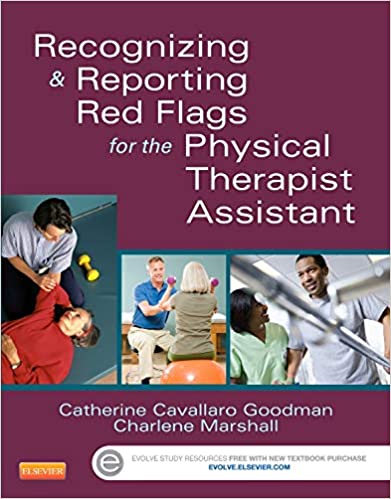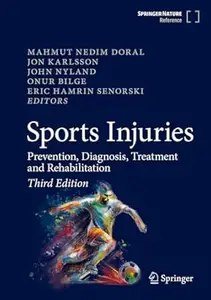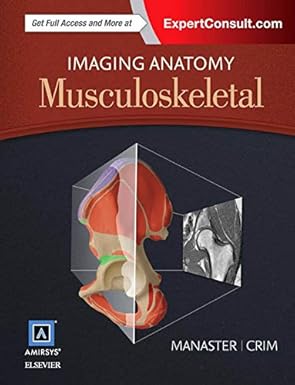Recognizing and Reporting Red Flags for the Physical Therapist Assistant will help you develop skills to recognize signs and symptoms that can compromise patient care, It is the first text to present a consistent, three-step model for monitoring patients for red flags relating to neuromuscular and musculoskeletal problems, medical diseases, side effects of medications, and other co-morbidities that may be unknown to the PT. Combining the insights of physical therapist Catherine Cavallaro Goodman and physical therapist assistant Charlene Marshall, this resource is unmatched in providing clear guidelines for finding and documenting red flags.
- Coverage of warning flags includes red and yellow flags, risk factors, clinical presentation, signs and symptoms, helpful screening clues, and guidelines for communicating with the PT, allowing you as the PTA to quickly recognize the need for any re-evaluation of the patient.
- Three-step approach to formative assessments of physical therapy patients provides a consistent way to watch for and report on adverse changes such as range of motion, strength, pain, balance, coordination, swelling, endurance, or gait deviations.
- PTA Action Plans show the clinical application of text material relating to observing, documenting, and reporting red (or yellow) flags to the physical therapist.
- Clinically relevant information includes the tools that you need to monitor the patient’s response to selected interventions, and accurately and quickly report changes to the supervising PT.
- Picture the Patient sections address what to look for when assessing or working with patients, especially typical red flag signs and symptoms of emerging problems.
- Case examples and critical thinking activities connect theory to practice, showing the role of the PTA and how the PTA can integrate clinical observations with clinical reasoning skills so that they can.
- Cognitive processing-reasoning approach encourages you to learn to gather and analyze data, pose and solve problems, infer, hypothesize, and make clinical judgments, so that you can notify the supervising PT of clients who need further evaluation or may require a referral or consultation with other health care professionals.
- Summary boxes and tables highlight key information for quick reference.
- Key terminology is listed in each chapter, which each term bolded within the chapter and defined in a back-of-book glossary.
- Full-color illustrations and design clearly demonstrate pathologies and processes and make lookup easier in busy clinical settings.
- An Evolve companion website enhances your problem-solving and decision-making skills with additional case studies, problem-solving questions, and activities, as well as screening tools and checklists.
- Combined authorship by a physical therapist and physical therapist assistant provides an authoritative and unique voice in the PTA field.
چکیده فارسی
تشخیص و گزارش پرچمهای قرمز برای دستیار فیزیوتراپیست به شما کمک میکند تا مهارتهایی را برای تشخیص علائم و نشانههایی که میتوانند مراقبت از بیمار را به خطر بیندازند، توسعه دهید،این اولین متنی است که ارائه میشود. یک مدل سه مرحله ای سازگار برای نظارت بر بیماران از نظر علائم قرمز مربوط به مشکلات عصبی-عضلانی و اسکلتی عضلانی، بیماری های پزشکی، عوارض جانبی داروها، و سایر بیماری های همراه که ممکن است برای PT ناشناخته باشد. این منبع با ترکیب بینشهای فیزیوتراپیست کاترین کاوالارو گودمن و دستیار فیزیوتراپیست شارلین مارشال، در ارائه دستورالعملهای واضح برای یافتن و مستندسازی پرچمهای قرمز بینظیر است.
- پوشش پرچمهای هشداردهنده شامل پرچمهای قرمز و زرد، عوامل خطر، تظاهرات بالینی، علائم و نشانهها، سرنخهای غربالگری مفید و دستورالعملهایی برای برقراری ارتباط با PT است که به شما به عنوان PTA امکان میدهد به سرعت تشخیص دهید. نیاز به هرگونه ارزیابی مجدد از بیمار.
- رویکرد سه مرحلهای برای ارزیابیهای تکوینی بیماران فیزیوتراپی روشی ثابت برای مشاهده و گزارش تغییرات نامطلوب مانند دامنه حرکت، قدرت، درد، تعادل، هماهنگی، تورم، استقامت، یا انحراف راه رفتن.
- برنامههای اقدام PTA کاربرد بالینی مطالب متنی مربوط به مشاهده، مستندسازی و گزارش پرچمهای قرمز (یا زرد) را به فیزیوتراپ نشان میدهد.
- اطلاعات مرتبط بالینی شامل ابزارهایی است که برای نظارت بر پاسخ بیمار به مداخلات انتخابی، و گزارش دقیق و سریع تغییرات به PT ناظر نیاز دارید.
- تصویر بیمار بخشها آدرس در هنگام ارزیابی یا کار با بیماران، بهویژه رنگ قرمز معمولی به چه مواردی باید توجه کرد. علائم و نشانه های مشکلات در حال ظهور را علامت بزنید.
- نمونههای موردی و فعالیتهای تفکر انتقادی تئوری را به عمل مرتبط میکند و نشان میدهد که چگونه PTA میتواند مشاهدات بالینی را با مهارتهای استدلال بالینی ادغام کند تا بتوانند.
- رویکرد استدلال پردازش شناختی شما را تشویق میکند تا جمعآوری و تجزیه و تحلیل دادهها، طرح و حل مسائل، استنتاج، فرضیهسازی و قضاوت بالینی را بیاموزید، تا بتوانید به PT ناظر مشتریانی که نیاز به ارزیابی بیشتر دارند یا ممکن است نیاز به ارجاع یا مشاوره با سایر متخصصان مراقبت های بهداشتی داشته باشند، اطلاع دهید.
- کادرها و جداول خلاصه اطلاعات کلیدی را برای ارجاع سریع برجسته کنید.
- اصطلاحات کلیدی در هر فصل فهرست شده است، که هر عبارت در داخل فصل پررنگ شده و در واژه نامه پشت کتاب تعریف شده است.
- تصاویر و طراحی تمام رنگی به وضوح آسیبشناسی و فرآیندها را نشان میدهد و جستجو در محیطهای بالینی شلوغ را آسانتر میکند.
- یک وبسایت همراه Evolve مهارتهای حل مسئله و تصمیمگیری شما را با مطالعات موردی اضافی، سؤالات حل مسأله و فعالیتها، و همچنین ابزارهای غربالگری و چک لیست ها.
- نویسندگی ترکیبی توسط یک فیزیوتراپیست و دستیار فیزیوتراپیست صدای معتبر و منحصر به فردی را در زمینه PTA ارائه میکند.
ادامه ...
بستن ...










